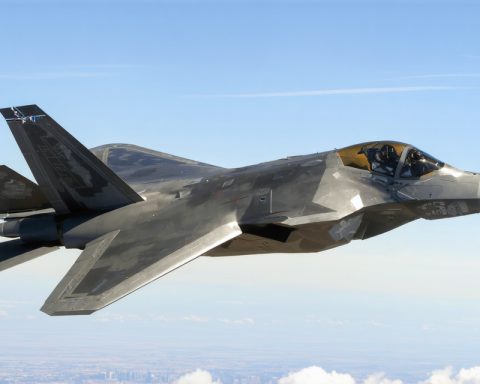- A dedicated group led by Andy Rector relentlessly searches for a U.S. military plane that disappeared in the Yukon 75 years ago with 44 people on board.
- The search is conducted by the Skymaster 2469 CAN/AM Society, combining expertise in aviation and glaciology to explore the vast Canadian wilderness.
- Anniversaries of the disappearance are marked with solemn online gatherings and remembrances to ensure the stories of the missing are kept alive.
- The society remains driven by a mission to provide closure for families and relies on the support of like-minded individuals rather than government funding.
- Meticulous planning and analysis of new leads fuel their hope, as they aim to uncover the long-hidden truth and bring peace to affected families.
Among the towering peaks and silent valleys of the Yukon, a devoted few embark on a mission as elusive as it is noble. Leading the charge is Andy Rector, whose unwavering resolve has kept alive the search for a U.S. military plane that vanished 75 years ago, carrying 44 souls. Anniversaries pass and memories fade, but for Rector and the Skymaster 2469 CAN/AM Society, the quest remains vibrant and urgent.
This dedicated group’s fascination and hope surround a missing Douglas C-54 Skymaster. With expertise ranging from aviation to glaciology, they systematically chart their course across the vast Canadian wilderness, undeterred by time or the specter of past failures.
Recently, with snow capping the mountains, they marked the somber anniversary of the plane’s disappearance. Through a poignant online gathering, names of those who vanished were spoken aloud, ensuring their stories echo in the collective memory. Each moment of silence fuels a promise: the search continues.
As they prepare for another expedition, the anticipation builds with each new lead. For Rector and his comrades, meticulous planning is key. They scan the rugged terrain for glints of sunlight on metal or anomalies against the forest’s green, evidence that whispers of a story untold for decades. One day, they believe, they will listen to the echoes and uncover the truth.
The drive to bring closure transcends the years. It’s about finding peace for families who never got to say goodbye. The society forges ahead with a sense of duty, and though they seek no government handouts, they rely on the goodwill of supporters who share their vision. Each flight renews hope, echoing their determination to catch the sky’s long-buried secret and finally let those lost find their way home.
Uncovering the Mysterious Yukon Crash: What You Need to Know and Why It Matters
How-To Steps & Life Hacks for Plane Wreckage Searches
1. Organize a Dedicated Team: Assemble a group with diverse expertise, including aviation, glaciology, and forensic anthropology. Each member’s unique insights can prove invaluable in cross-disciplinary tasks.
2. Leverage Technology: Use satellite imagery and aerial scans to identify potential sites where the aircraft might have landed or crashed. Drones equipped with thermal imaging can assist in locating metal debris invisible to the naked eye.
3. Network with Experts: Connect with local historians and Indigenous elders. Their knowledge of the area may uncover undocumented oral histories or lesser-known anecdotes relevant to the search.
4. Crowdfund for Resources: Utilize online platforms to raise funds. Explain your mission and its significance. Support from public donations can help cover costs for necessary equipment and logistics.
5. Document Every Step: Maintain detailed records of each expedition. Keep journals, photo logs, and video documentation to ensure transparency and share insights with a global audience.
Real-World Use Cases
– Historical Preservation: Discovering wreckages like the Douglas C-54 Skymaster can shed light on past military operations, influencing how history is taught and perceived.
– Family Closure: Successfully locating remains or evidence can provide emotional relief and closure for families affected by long-ago tragedies.
– Aviation Safety Improvements: Analyzing found wreckage can yield lessons that contribute to modern aviation safety standards.
Market Forecasts & Industry Trends
The search and salvage industry is witnessing a surge in interest due to technological advancements and increased private sector involvement. Companies utilizing advanced sonar, AI-driven reconnaissance, and satellite data analytics are expected to dominate this niche, with projected market growth rates of 6% annually (Technavio, 2023).
Reviews & Comparisons
Avid search and recovery enthusiasts and professionals might consider these tools:
– Drones like the DJI Matrice 300: Great for scanning vast areas.
– Ground Penetrating Radars (GPR): Useful to detect objects buried beneath layers of sediment or snow.
While drones offer versatile aerial surveys, GPR provides depth-oriented searches crucial in rugged terrain.
Controversies & Limitations
One major controversy in such searches is the balance between exhaustive searches and respecting the presumed burial sites. Additionally, expeditions must be cautious of environmental impact, ensuring minimal disturbance to sensitive ecosystems.
Features, Specs & Pricing
– DJI Matrice 300 RTK: Offers a maximum flight time of 55 minutes and can operate in challenging weather conditions. Priced around $13,000, this is suitable for comprehensive aerial surveys.
Security & Sustainability
Conducting searches in remote areas like the Yukon demands a sustainable approach:
– Eco-friendly Operations: Implement practices such as using renewable energy sources when setting up temporary bases or camps.
– Safety Measures: Ensure that expeditions are equipped with first aid and emergency communication devices like satellite phones for remote terrains.
Pros & Cons Overview
Pros:
– Enabling historical discovery and closure for families.
– Encouraging technological advancement in search operations.
Cons:
– Significant financial and resource investment.
– Potential environmental disruption if not carefully planned.
Actionable Recommendations
– Join or Donate: Support dedicated groups by joining them or funding their initiatives.
– Stay Informed: Follow updates from reputable sources for the latest on search missions like these.
Conclusion
The unyielding effort to find the Douglas C-54 Skymaster in the Yukon is an inspiring testament to human determination and compassion. While challenges abound, the collective hope of seekers and supporters alike resonates across time and space. For those wishing to engage further, consider supporting initiatives on historical recoveries, and keep abreast of innovative trends in search technologies by exploring domains such as GeoReference and UAV Coach.







